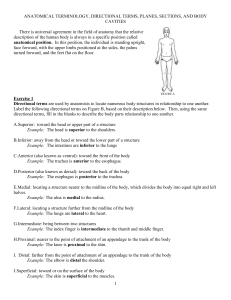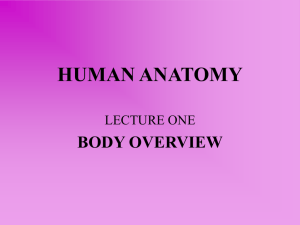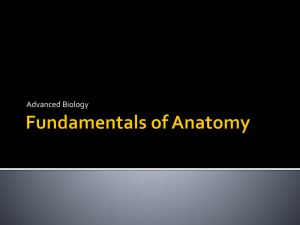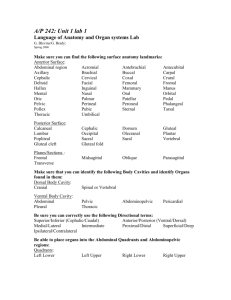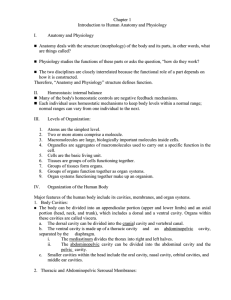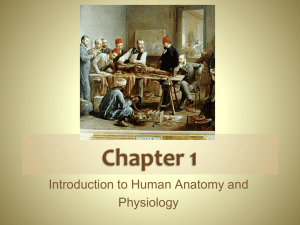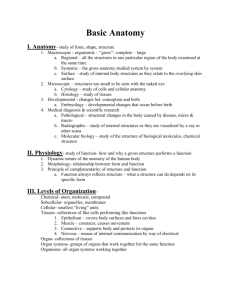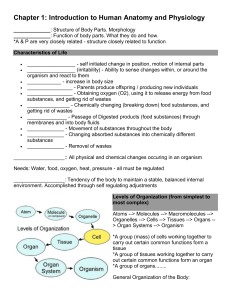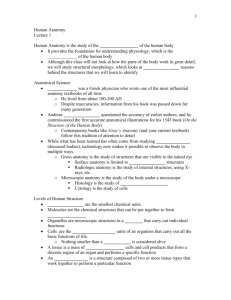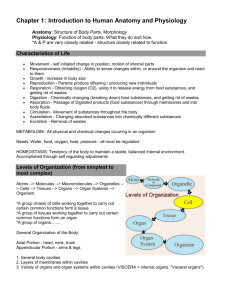Biology 201 Human Anatomy and Physiology Lecture Notes
advertisement
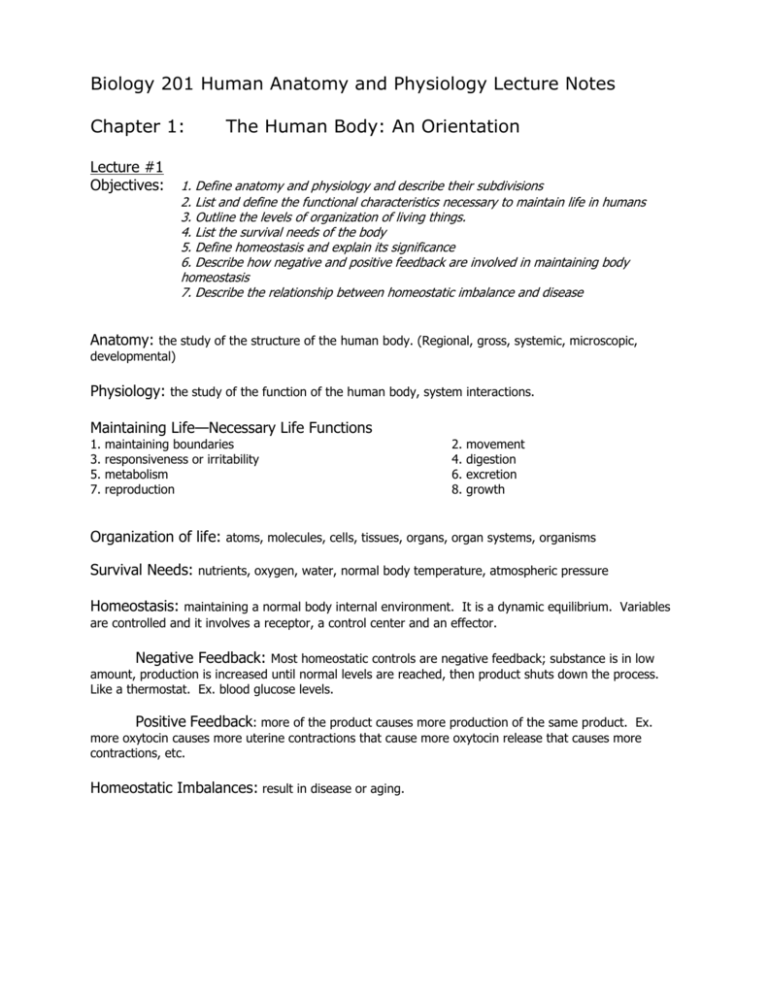
Biology 201 Human Anatomy and Physiology Lecture Notes Chapter 1: Lecture #1 Objectives: The Human Body: An Orientation 1. Define anatomy and physiology and describe their subdivisions 2. List and define the functional characteristics necessary to maintain life in humans 3. Outline the levels of organization of living things. 4. List the survival needs of the body 5. Define homeostasis and explain its significance 6. Describe how negative and positive feedback are involved in maintaining body homeostasis 7. Describe the relationship between homeostatic imbalance and disease Anatomy: the study of the structure of the human body. (Regional, gross, systemic, microscopic, developmental) Physiology: the study of the function of the human body, system interactions. Maintaining Life—Necessary Life Functions 1. 3. 5. 7. maintaining boundaries responsiveness or irritability metabolism reproduction 2. 4. 6. 8. movement digestion excretion growth Organization of life: atoms, molecules, cells, tissues, organs, organ systems, organisms Survival Needs: nutrients, oxygen, water, normal body temperature, atmospheric pressure Homeostasis: maintaining a normal body internal environment. It is a dynamic equilibrium. Variables are controlled and it involves a receptor, a control center and an effector. Negative Feedback: Most homeostatic controls are negative feedback; substance is in low amount, production is increased until normal levels are reached, then product shuts down the process. Like a thermostat. Ex. blood glucose levels. Positive Feedback: more of the product causes more production of the same product. Ex. more oxytocin causes more uterine contractions that cause more oxytocin release that causes more contractions, etc. Homeostatic Imbalances: result in disease or aging. Lecture #2 Objectives: Chapter 1 continued 1. Describe the anatomical position 2. Use correct anatomical terms to describe body directions, regions, and body planes or sections 3. Locate and name the major body cavities and their subdivisions, and list the major organs contained within them 4. Describe the specific serous membranes and indicate their common function 5. Name the nine regions or four quadrants of the abdominopelvic cavity and list the organs they contain Anatomical Position: body erect, arms at sides, legs together, palms face up. This allows proper orientation of the parts of the body and gives us a directional reference point, regardless of the position of the body. Directional Terms: allows us to explain where one body structure is in relation to another. Superior: above Inferior: below Medial: toward the midline Lateral: away from the midline (sides, edges) Anterior: in front of Posterior: behind Proximal: closer to the main part of body (used with appendages) Distal: farther away from the main part of body (appendages) Superficial (external): toward surface Deep (internal): away from surface Body Planes and Sections Coronal (frontal): divides into front and back halves (like a CT scan) Sagittal: divides into left and right halves (midsagittal divides into equal left and right halves Transverse (axial): divides into top and bottom halves Body Cavities Cranial: contains brain Spinal: contains spine Dorsal: made of cranial and spinal cavities Ventral: made of thoracic, abdominal and pelvic cavities. Thoracic: contains lungs and heart, bounded posteriorly by diaphragm. Abdominal: contains digestive organs, spleen Pelvic: contains urinary bladder, reproductive organs, some digestive organ Serous Membranes: like a fist in a balloon. A double layered membrane with fluid in the cavity between layers. Allows organs to move without friction (heart, lungs, etc) Membranes in Ventral Body Cavity: 1. Parietal pleura: lines the walls of the thoracic cavity 2. Visceral pleura: covers lungs, pleural cavity is found between parietal and visceral pleura 3. Parietal pericardium: sac around heart 4. Visceral pericardium: also called epicardium, covers heart with pericardial cavity in between 5. Parietal peritoneum: lines walls of abdominal cavity 6. Visceral peritoneum: covers abdominal organs Regions and Quadrants Rt hypochondriac Epigastric Lf hypochondriac Rt lumbar Umbilical Lf lumbar Rt iliac (inguinal) Hypogastric (pubic) Lf iliac Upper right quadrant Upper left quadrant Lower right quadrant Lower left quadrant
